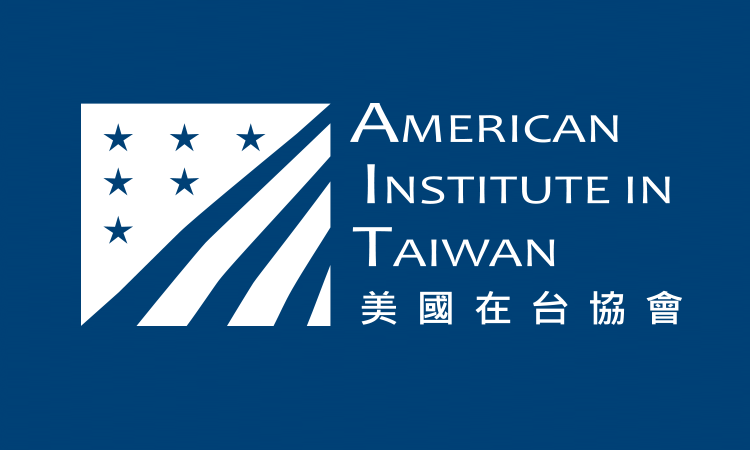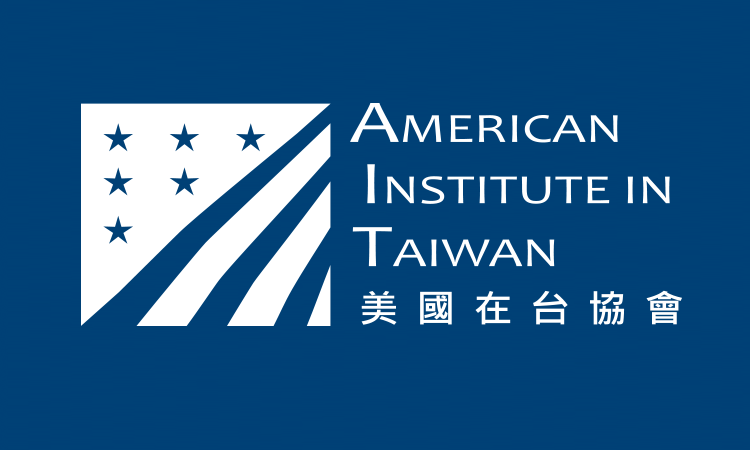OT-1975
October 9, 2019
Remarks by APEC Senior Official and DAS Sandra Oudkirk
at the Yushan Forum, Taipei, Taiwan
October 9, 2019
(As Prepared for Delivery)
“Envisioning Asia and Taiwan’s Role in the Indo-Pacific Region”
Vice President Chen, Minister Deng, gracious hosts, distinguished dignitaries, friends, it is an honor for me to address you this morning.
This has been a busy and a benchmark year for U.S.-Taiwan relations – it is the 40th anniversary of the Taiwan Relations Act – and it is a good time to reflect on how our relationship has evolved.
I first came to Taiwan more than 25 years ago to work at AIT, the American Institute in Taiwan. It was my first posting, and as many of you can recall, Taiwan was a much different place then.
Over the last four decades, the United States and Taiwan have built a comprehensive, durable, and mutually beneficial partnership, grounded in shared interests and values.
We work together as equal members in regional institutions like the Asia-Pacific Economic Cooperation (APEC) forum.
We also work through fora like the Global Cooperation and Training Framework (GCTF) and our new Indo-Pacific Democratic Governance Consultations, where Taiwan shares its expertise and best practices.
More importantly, the United States values Taiwan as a partner in our shared vision for a free and open Indo-Pacific region.
A year ago, Ambassador Atul Keshap, who was also the APEC Senior Official in 2012-2013, addressed this same gathering to emphasize the importance of a free and open Indo-Pacific to the future prosperity of the region. This continues to be the case, and as the U.S. Senior Official for APEC, as well as the Deputy Assistant Secretary for the Pacific, I see this every day in my work.
Today, I’d like to share with you the United States’ vision for a free and open Indo-Pacific, discuss APEC’s importance as the premier economic forum in the region, and highlight the important role Taipei plays.
The U.S. Vision for a Free & Open Indo-Pacific
The U.S. vision to advance a free and open Indo-Pacific is not new. President Trump identified the Indo-Pacific as among the United States’ most important priorities in his address to the APEC CEO Summit in Vietnam in 2017.
Our strategy is inclusive. Our Indo-Pacific vision excludes no-one. As Secretary Pompeo has said multiple times, “We seek to work with anyone to promote a free and open Indo-Pacific, so long as that cooperation adheres to the highest standards that our citizens demand.”
Our Indo-Pacific vision enshrines concepts shared by many in the region – including Taiwan’s New Southbound Policy. Though our respective visions may differ somewhat, our Indo-Pacific strategy and those of our allies and partners are complementary and similarly guided by a commitment to uphold the rules-based order in the region.
Under the Indo-Pacific economic pillar, the United States is taking a whole-of-government approach to advance free, fair, and reciprocal trade; to promote economic and commercial engagement that is high standard and respects local sovereignty; and to mobilize greater private sector investment into the Indo-Pacific.
We want to create the conditions that will encourage trillions of dollars in American capital to fund projects in productive and strategic sectors, such as infrastructure, energy, and digital economy.
Developing countries in the Indo-Pacific need $1.7 trillion in infrastructure investment every year. No single government has this much money. That is why our strategy seeks to create the conditions needed to attract private-sector investment, including through events like the November 4 Indo-Pacific Business Forum we will jointly host with the Government of Thailand in Bangkok.
Our private sector is one of our biggest strengths and no one invests more in the Indo-Pacific than U.S. businesses.
U.S. outbound FDI more than doubled from 2007 to 2017, reaching $940 billion. In 2016, U.S. direct investment supported 5.1 million jobs in the Indo-Pacific region.
This is important because the greater the role of the private sector, the more sustainable economic growth can be. In contrast, state-dominated and –directed investment often results in corruption, inefficiency, unevenly distributed economic growth, and ultimately public backlash.
Beyond the private sector, cooperation with partners and regional institutions such as ASEAN, the PIF, and APEC is at the heart of our strategy.
APEC is the cornerstone of the economic pillar of the Indo-Pacific vision. Through APEC, we level the playing field for businesses by facilitating transparent and efficient cross-border trade procedures, strengthening policies to improve the business environment and create economic opportunity, and advancing free and fair trade and investment practices.
APEC
I became the U.S. Senior Official for APEC a few days before the second APEC Senior Officials’ Meeting – SOM2 in APEC –speak – this May.
This baptism by fire showed me very directly APEC’s contribution to shaping regional trade and economic rules and standards.
At SOM 2, under Chile’s leadership and six days of negotiations, the 21 economies reached a consensus statement for the Ministers Responsible for Trade Meeting – the first such statement since 2015.
The statement addressed key priorities that demonstrated APEC’s relevance to the region, including: the need for APEC economics to facilitate the free flow of data, increase services competitiveness, addressing the increasing economic harm from marine debris, and support work underway in the WTO to prohibit certain forms of fisheries subsidies.
At the recent Third Senior Officials’ meeting in Chile, the United States hosted workshops and dialogues for private sector and government officials on cybersecurity standards, agricultural biotechnology, supply chain connectivity, combatting marine debris, gender and structural reform, and more. The sheer number and scope of these events demonstrates APEC’s important role is far reaching.
During this most recent meeting, member economies finalized the APEC Women in STEM Principles and Actions – a set of APEC principles that organizations and institutions can voluntarily adopt to help guide policies and activities to support and advance women in STEM.
We also came to agreement on Building Blocks for Facilitating Digital Trade Pathfinder, which provides high-level guidance to policymakers in a subset of just over half of the APEC economies on principles to facilitate digital trade and enshrines important digital trade principles including ensuring cross-border data flows and avoiding data localization requirements.
APEC also approved the APEC Online Dispute Resolution (ODR) Framework, which will create a platform for SMEs to identify ODR providers to resolve business-to-business disputes at a low cost.
Finally, we endorsed the two Roadmaps on Combatting Illegal, Unreported, and Unregulated Fishing and on Marine Debris, signaling APEC’s wide agreement to tackle two of the most challenging and consequential marine conservation problems today. By implementing the roadmaps over the coming years, APEC economies will encourage both economic development and environmental sustainability and will create best practices that non-APEC members can adopt.
Going into Leaders’ Week in November, the United States will continue to work to shape the policy environment for free and fair trade in the region and promote high standards.
The United States will continue to advance our APEC priorities on the digital economy, trade facilitation, services trade competitiveness, women’s economic participation, infrastructure, and structural reform.
Taiwan
So how does Taiwan fit into APEC and the vision of a free and open Indo-Pacific?
In 1991, Taiwan joined APEC as a full member economy under the nomenclature of Chinese Taipei.
Since then, it has been a valuable partner in APEC, actively promoting women’s economic empowerment, securing supply chains and facilitating trade, and advancing work on the digital economy – including contributing $200,000 to establish a Digital Innovation sub-fund along with Australia and South Korea.
We have also worked closely together to support the APEC Women and the Economy Sub-fund and expand the number of companies and economies that participate in the APEC Cross-Border Privacy Rules System, an initiative that provides numerous benefits such as privacy protections for consumers and a mechanism for companies to demonstrate strong privacy protections.
Regionally, Taiwan plays a key role in maintaining a free and open Indo-Pacific; this is true in terms of economics, security, and good governance.
Taiwan is a role model for the Indo-Pacific region and beyond, both in terms of its democratic development and in terms of its innovative – and private sector-led growth.
Through the GCTF program, the United States and Taiwan have jointly addressed emerging global and regional security challenges by providing training to third-country nationals. Together, we have convened 17 programs on public health, energy, humanitarian assistance and disaster relief, women’s empowerment, media literacy, and the digital economy.
Taiwan is also a model globally. Last year, Taiwan indicated that it would voluntarily forego special & differential (S&D) treatment in future rounds of negotiations the World Trade Organization, where it is known as Chinese Taipei.
This announcement set an encouraging example for other Members and underscored that Taiwan’s participation in regional and international organizations has yielded considerable progress.
The United States calls on relatively advanced, wealthy, and influential Members—to forego S&D treatment in all current and future WTO negotiations.
This act of leadership would build momentum for reform and help ensure that the WTO remains a viable forum for meaningful negotiations.
The United States looks forward to continued cooperation with Taiwan to help realize our shared goal of building a more prosperous, safe, inclusive, and interconnected Indo-Pacific region.
Conclusion
The Taiwan I just described is not one many would have imagined more than 25 years ago.
In 1992, Taiwan had yet to hold its first direct presidential election. The Taipei Metro line was still under construction. Taipei 101 had yet to dominate the Taipei skyline.
And most importantly, especially in my capacity here today, Taiwan was negotiating admission to the WTO precursor, the GATT, and had just been admitted to APEC as Chinese Taipei.
And over the past 25 years Taiwan has clearly demonstrated its contributions to free and open trade and investment
Today, even as we continue to seek to resolve longstanding bilateral market access issues, I can say that Taiwan is very much an active and committed partner in the Indo-Pacific region and around the world.
And the U.S. will continue to support our reliable partner as it seeks to expand its already significant contributions to enhancing free and open trade and investment and to addressing global challenges.
Our roundtable discussion here today will focus on envisioning Asia. The vision I want to impart is a vision of a free and open Indo-Pacific region that excludes no-one. A vision shared by our allies and partners that are complementary and guided by our commitment to uphold the rules-based order in the region.
















![Video Thumbnail [Recovered]-01](../wp-content/uploads/sites/269/Video-Thumbnail-Recovered-01-1-750x450.jpg)





